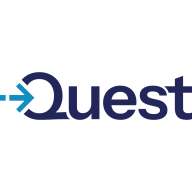

Ataccama ONE Platform and erwin Data Intelligence are prominent competitors in the data management industry. While Ataccama ONE Platform shows expertise in deployment and support, erwin Data Intelligence offers superior features and value proposition.
Features: Ataccama ONE Platform provides robust data quality management, data governance, and master data management. erwin Data Intelligence excels in data modeling, data impact analysis, and metadata management, supporting data visualization and insights.
Room for Improvement: Ataccama ONE Platform could enhance its analytical capabilities and metadata integration. Its interface, although effective, may benefit from modernization and increased automation features. erwin Data Intelligence can improve deployment simplicity, making its rich features more accessible. Its user interface can be streamlined for better navigation and reduced complexity.
Ease of Deployment and Customer Service: Ataccama ONE Platform is recognized for its smooth deployment and excellent customer support, allowing easy onboarding. erwin Data Intelligence, although supported well, may demand detailed setup because of its comprehensive functionalities.
Pricing and ROI: Ataccama ONE Platform offers competitive pricing with the potential for rapid ROI due to its cost-effective setup. erwin Data Intelligence requires a higher initial investment, justified by advanced features and long-term benefits, attracting those seeking extensive data capabilities.
| Product | Market Share (%) |
|---|---|
| Ataccama ONE Platform | 2.3% |
| erwin Data Intelligence | 1.8% |
| Other | 95.9% |


| Company Size | Count |
|---|---|
| Small Business | 3 |
| Large Enterprise | 7 |
| Company Size | Count |
|---|---|
| Small Business | 1 |
| Midsize Enterprise | 4 |
| Large Enterprise | 14 |
Ataccama ONE Platform provides a comprehensive solution for profiling, cleansing, and integrating data with a user-friendly drag-and-drop interface, enhancing data quality and governance.
Ataccama ONE Platform enhances data profiling and cleansing with easy configuration and robust integration, such as with Collibra. Users value its drag-and-drop capabilities, supporting mainframe, AI, and machine learning. The platform improves data security through profiling and masking while offering extensive integration options. Some areas needing improvement include large database handling and batch management. Additional support for social media data sources, better documentation, and clearer language would be beneficial. Enhanced interfaces, particularly with Collibra, and refined notification systems are desired. This platform suits users seeking improvements in data quality, governance classification, and data migration, connecting with sources like Microsoft SQL, Oracle, and Teradata.
What are the key features of Ataccama ONE Platform?In industries like finance and healthcare, Ataccama ONE Platform facilitates data quality management and ensures compliance by connecting with data sources such as Microsoft SQL and Oracle. These industries utilize it for data migration tasks, ensuring data integrity through mapping and transformation processes.
Erwin Data Intelligence drives automation, supports data catalog and literacy, and offers Smart Data Connectors for efficient metadata handling. Its customization flexibility and integration facilitate enhanced data governance, visualization, analysis, and compliance.
Erwin Data Intelligence offers automation scripts that accelerate development, integrated data cataloging, data profiling, and lineage analysis to streamline information management. Users appreciate its capability in metadata harvesting, code engineering, and infrastructure integration. The tool provides flexibility to enhance governance and data visualization. While it performs well, users have noted challenges with API robustness and interface complexity, and there are opportunities to improve workflow integration, AI features, and large dataset handling. Companies rely on it for metadata management, automation of metadata mappings, and data governance to support compliance and literacy.
What are the main features of Erwin Data Intelligence?In industries such as finance, healthcare, and retail, organizations implement Erwin Data Intelligence for efficient metadata management and governance. It assists in automating lineage and mapping, supporting ETL procedures while enhancing compliance and data literacy efforts. Its flexibility and integration support create valuable data insights and governance improvements.
We monitor all Data Governance reviews to prevent fraudulent reviews and keep review quality high. We do not post reviews by company employees or direct competitors. We validate each review for authenticity via cross-reference with LinkedIn, and personal follow-up with the reviewer when necessary.